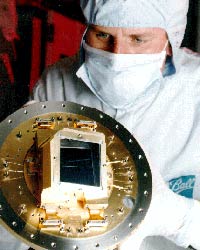Once upon a time, a few weeks after the 2000 election, I was on a long Southwest flight full of antsy, pre-Thanksgiving energy. Since the flight attendants for some reason had corporate swag to give away, they decided to hold a trivia contest. A flight attendant announced a question over the PA, and the first person to ring their attendant call button and give the right answer won a prize. The prizes included tshirts, pens, and bottles of Wild Turkey.
I won a pen for the correct answer "William Jefferson Clinton", to the question, "Who is the president of the United States?", which was a trick question, since the Bush v. Gore election still had no clear winner.
One question was, "What is a telomere?" I had no idea, and was embarrassed -- it's rare for me to lose a science trivia question. Afterward, I asked the flight attendant. He gave a quick explanation (the tips of chromosomes, which control aging), and I remembered reading about them in an article about Dolly the cloned sheep, asking whether her short telomeres had caused her short life. I also asked the flight attendant why he knew so much about DNA. He had been a research biologist, got tired of the pressure, and took a job at Southwest.
So that's the roundabout way that I learned about telomeres, which are the subject of this year's Nobel Prize for Medicine.
 Professor Astronomy explains how this year's Nobel Prize in Physics was awarded for inventions that you'll find at every professional observatory on Earth (and many amateur observatories, too): charge-coupled devices (CCDs) and long-distance fiber optics.
Professor Astronomy explains how this year's Nobel Prize in Physics was awarded for inventions that you'll find at every professional observatory on Earth (and many amateur observatories, too): charge-coupled devices (CCDs) and long-distance fiber optics.